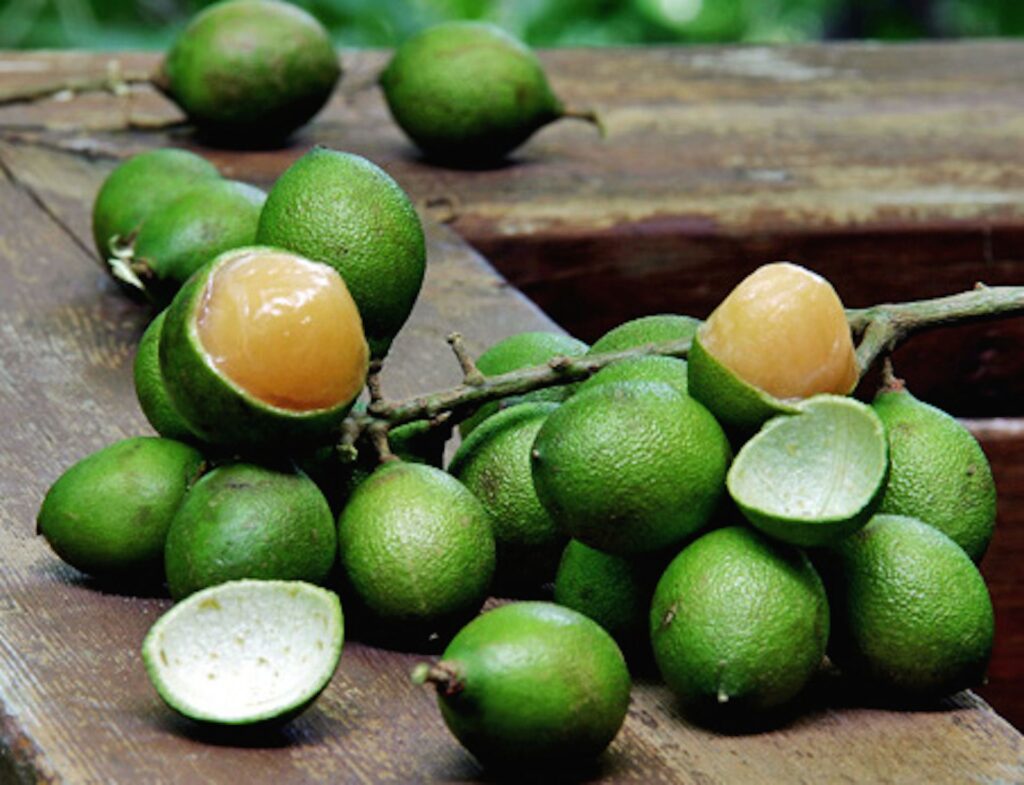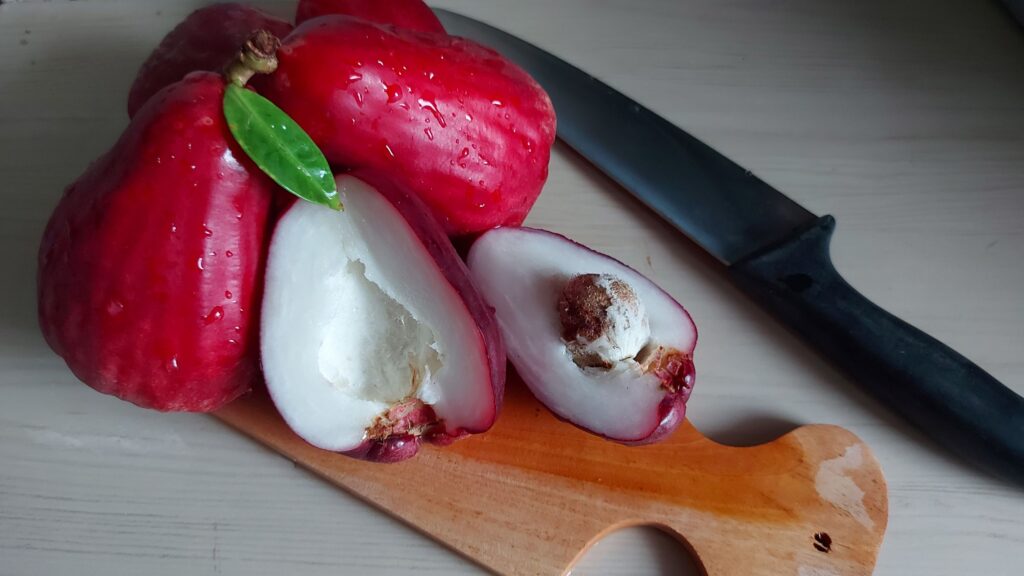Imagine a warm day under the sweet kiss of the Caribbean sun, just walking through a local food/craft market on a Caribbean island. You are drawn in by the bright colors, the thoughtful arrangements of fresh produce and crafts in large vendor trays, and the harmonious commotion of vendors (women) chattering about one thing or the other. The aroma in the gentle breeze is sweet, earthy, and herbal, you stop at a stall with unfamiliar produce. They appear to be a fruit, you ask the vendor and she said it’s a fruit and she tells you a name you’ve never heard. You become hesitant to buy because you’re not sure what this fruit will taste like or how to eat it. Well, this won’t happen to you on your next Caribbean trip. Jirie Caribbean has all the local info for you.
The Caribbean has an array of tropical fruits, each with its own story of origin. We’ve selected the sweetest and juiciest fruits for your enjoyment. Jirie Caribbean will show you how to eat them and there will be a special recipe for a healthy, power-packed fruit smoothie!
Soursop (Graviola):
This meaty, juicy fruit is native to the tropical Americas. This prickly dark green fruit has a creamy texture and a sour citrus flavor that is often compared to pineapple or strawberry.

Soursop is very low in calories and nutrient-rich. According to Healthline.com, “Some test-tube and animal studies have even found that it may help with everything from alleviating inflammation to slowing cancer growth.”
Soursop is eaten raw by cutting the fruit down the middle and subdividing it into small portions. You can eat the white juicy flesh with your hands or scooping it out with a spoon. The skin and seeds are not consumed. You can add this fruit to your fruit bowls and smoothies.
Bajan Ackee (Guinep):
You may hear locals on some islands call this ackee, not to be mistaken for the Jamaican ackee, Guinep is a small round fruit that will make your mouth water. It has a smooth green, thin skin and a yellow or light orange jelly flesh with a hard round seed in the center. Guinep is native to the Caribbean and a great source of iron and phosphorous. Its flavor when ripe is sweet and sour with citrusy profiles.

You would eat this fruit by peeling off the skin and sucking on the flesh until you get to the seed. Guineps can be found on most Caribbean islands and territories and a great choice to cool off on a hot day.
Sugar Apple (Sweet Sop, Pomme Cahnel, Custard apple):
This fragrant and delectably sweet fruit was brought to the America and West Indies by Spanish traders. It has a thick, light green, and knobby skin that when the fruit is ripe its syrupy nectar escapes out of these cracks. You can eat the sugar apple with your hands and lots of napkins by just carefully pulling the fruit apart with your hands. The flesh inside is white with hard black seeds and the texture is soft and slightly grainy. The flavor is similar to custard coining the nickname “Custard apple”. Only the white flesh is eaten.

Dare not pass an offer of this fruit, it is heavenly on the palette.
Caribbean Plum (Red Plum, Red Mombin):

Caribbean Plums are high in Vitamin C and a good source of Vitamin K. The fruit is an edible oval drupe (outer fleshy part), ripens dark red (occasionally yellow), and contains a single large seed. In some Caribbean countries, they make small cuts into the plum’s flesh and pickle them in a brine of salt, garlic, hot sauce, and dried seasonings. It makes a tasty snack on the go.
Caribbean plums are native to the tropical Americas, including the West Indies. It has been naturalized into the Bahamas and other Caribbean islands. The fruit is aromatic when ripe and ranges from sweet to tart in flavor.
Malay Apples (Mountain Apples, Love apples)
This fruit is thought to have originated from tropical regions in Asia, but this delicate fruit is prevalent throughout the Caribbean. The apple-sized fruit is often deep red, pear-shaped with waxy skin. The meat flesh is white, crunchy, juicy, and sweet. Some varieties have white with pink stripes or pink skin. There is a dark brown seed in the middle.

The raw skin and flesh are edible. You can eat it like a regular apple or juice the flesh. This fruit bruises easily but don’t pass these up at the local market.
Now, you can browse a Caribbean market confidently, one more step to eating and living like the locals. That being said, Jirie Caribbean has brought a deliciously healthy and quick tropical fruit smoothie to you! Locals in many islanders make this drink at home and it is also served cold at many street eateries. Soursop smoothie is sweet, delectable, and now part of your tropical drink list!

Caribbean Soursop Smoothie Drink
Equipment
- Blender
Ingredients
- 1 large overrippen sour sop (remove skin & seeds)
- 2 cups whole milk
- A pinch of grated nutmeg
- A pinch of cinnamon powder
- 1 tsp vanilla essense
Instructions
- In a blender add all the ingredients
- Blend. Add more milk if the smoothie is too thick
- Serve smoothie cold in a tall glass with a large straw, and a dusting of cinnamon powder.


